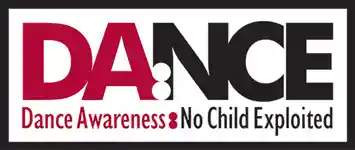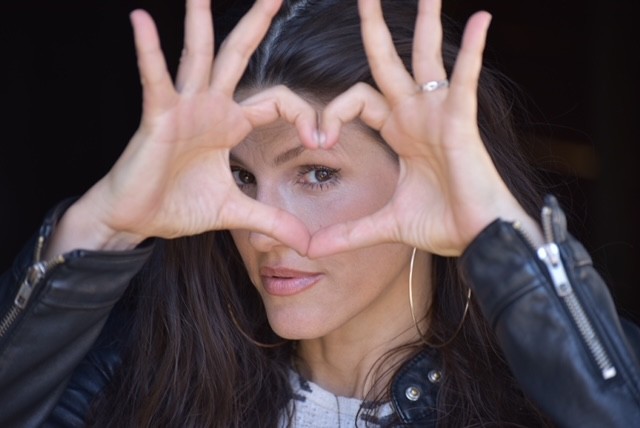 I started dancing at the age of four in the 1970s and I have been a dance educator since 1991. Becoming a parent of young dancers in the early 2000s allowed me to revisit the dance studio environment with new insight and inspired me to conduct research on contemporary trends in dance training for children and adolescents. Sexualization of young dancers became the focus of my doctoral research in Gender, Feminist and Women’s Studies at York University in Toronto, research I continue to conduct to this day in my position as Research Associate at Brock University in St. Catherine’s, Canada.
I started dancing at the age of four in the 1970s and I have been a dance educator since 1991. Becoming a parent of young dancers in the early 2000s allowed me to revisit the dance studio environment with new insight and inspired me to conduct research on contemporary trends in dance training for children and adolescents. Sexualization of young dancers became the focus of my doctoral research in Gender, Feminist and Women’s Studies at York University in Toronto, research I continue to conduct to this day in my position as Research Associate at Brock University in St. Catherine’s, Canada.
As my two children—a girl and a boy—continued to train in dance, I spent many hours waiting in studio hallways as a “dance mom” and in my parallel role as an ethnographic researcher. My ethnographic research involved conducting focus groups with approximately 100 competitive dancers ranging in age from five to twenty-three and interviews with over 30 dance instructors, parents of dancers, studio owners and competition adjudicators. I learned that although perspectives on the topic are diverse and highly subjective, many agree that sexualization—which has become increasingly normalized within the training, choreography, costumes, and music used in dance studios and competition performances across Canada and the United States since the 1990s—is an issue that needs more serious attention in dance studios.
Early in my research, I wrote the following passage in my fieldnotes journal:
Entering a dance studio can be like diving into a swimming pool of pink paint. Awash with pink and other soft hues and covered in photographs of pretty dancers wearing tutus and pointe shoes with shiny ribbons, I sometimes imagine the studio walls to be whispering softly but persistently: “Girl, girl, girl…”
For very young girls who pursue serious training, the experience of being “pretty in pink” can act as a soothing panacea for some of the more difficult aspects of dancing—the endless hours of practice, physical pain, and emotional turbulence. Pink is significant as a symbol of the codes of femininity through which girls tend to bond with each other in dance studios. As girls reach pre-pubescence, their desire to be cute or pretty in pink is replaced with a longing to be sexy like the older dancers. By adolescence, girl dancers’ femininity is often understood as inseparable from their sexual seductiveness.
Some young girls are drawn to the female-centric space the dance studio provides as well as to opportunities to express their emerging sexualities. Other girls experience expectations that they will present themselves in highly feminized and/or sexualized ways as limiting or off-putting. As eroticized vocabularies of dance are fostered in many studios and sexualized choreographies are performed more frequently at recitals and competitions than they were thirty years ago, one of the dangers is that girls often internalize a sexually objectified sense of self that becomes dominant in the formation of their self-identities. While my research focuses on girl dancers, I know that boy dancers are not immune from the influence of gendered and sexualized social constructions. Often slotted into masculinized roles, boys can also be sexualized, though differently than girls.
Beyond the gendered binary that is so prevalent in dance training for youth, my research underscores that sexualization of young dancers is based on complex social constructions prevalent in broader society including race, class, age, dis/ability, along with other binaries that are more specific to dance studio culture: recreational/competitive, younger/older dancers, cute/sophisticated (sophisticated being synonymous with sexy in many studios), etc. Furthermore, the competitive team in dance studios tends to push boundaries, manifested in terms of technical or athletic skill, thematic content, costumes, and music. The detrimental consequences of pushing boundaries past the point of what is healthy for young dancers—including the boundaries of healthy development of age-appropriate expressions of sexuality—are of concern to many parents and dance educators. However, one of the primary goals of competitive teams is to attract the attention of the judges who often view dozens upon dozens of dance pieces over the course of each weekend during the spring competition season. One reason why dance studios present sexualized choreography in competitions is that it helps them stand out from the other competitors.
While my research problematizes certain directions that many of the dance studios are following that encourage the sexualization of young dancers, it is important to emphasize that the level of sexualization is highly varied from one competition or studio to the next. Many dance studios make conscientious efforts to avoid sexualization of dancers even though the consequences of not following the norm of seductive dancing may include lack of recognition from adjudicators or lack of enthusiasm from audiences. I am also encouraged by organizations such as Dance Awareness: No Child Exploited (DA:NCE) and the Youth Protection Association for Dance (YPAD) which are dedicated to creating more awareness of some of the problems that can arise when a sexualized dance aesthetic for children and youth is allowed to continue unimpeded.
In no way do I intend to suggest that sexual expression through dance should be eliminated. I believe that all expressions borne out of the lived realities, sensations, and desires of human beings should have a place within the realm of dance. It is sexualization imposed upon the bodies of child and adolescent girl dancers without their full understanding or consent that I interrogate. I wish to contribute to shifting the landscape of competitive dance and to challenge normative assumptions that dancing done by girls should be sexually provocative. I believe it is important to develop alternatives with dance communities. Training should emphasize the importance of somatic awareness and diverse body positivity, creative movement and dance composition, connections to social activism, inclusivity for gender non-conforming children and children with a range of abilities and disabilities, and affordability of dance programs for families across socio-economic strata.
As problematic as sexualized dancing can be for girl dancers, the embodied process of learning to dance represents a great deal of potential. Specifically, dance epitomizes transformation because moving bodies are highly fluid and changeable. To take advantage of this, privately-run dance studios could introduce a feminist, anti-sexualization dance pedagogy that would include more opportunities for girls to experience dance as a creative process and as self-expression from within. Teenage girls should be encouraged to signal they are moving towards adulthood not by projecting themselves as sexualized objects, but by creating dances that tackle challenging problems. Indeed, I believe that when girls and boys who dance are given tools to explore their own perspectives on issues that affect them, they will be empowered to reject sexual objectification and use the expressive capacities of their bodies-in-motion as instruments for positive personal and social change.

Guelph Youth Dance, photo by Dan Charlebois from Bloom Media.
 Bio: Lisa Sandlos holds a PhD in Gender, Feminist and Women’s Studies, an MA in Dance and is a Certified Movement Analyst (CMA). She is a long-time faculty member at York University in Toronto (School of Kinesiology, The School of Gender, Sexuality and Women’s Studies, Faculty of Education, and Department of Dance) and a research associate at Brock University in St. Catherine’s, Ontario, Canada.
Bio: Lisa Sandlos holds a PhD in Gender, Feminist and Women’s Studies, an MA in Dance and is a Certified Movement Analyst (CMA). She is a long-time faculty member at York University in Toronto (School of Kinesiology, The School of Gender, Sexuality and Women’s Studies, Faculty of Education, and Department of Dance) and a research associate at Brock University in St. Catherine’s, Ontario, Canada.
A keen interdisciplinary collaborator, Dr. Sandlos has worked on dozens of community projects with actors, musicians, puppeteers, and visual artists and she is co-founder with landscape architect Rennie Tang of a research/teaching group called Soma-City. Working through organizations such as the Ontario Arts Council’s Artists in Education program, the National Ballet of Canada’s Creating Dances, Global Water Dances, and the Toronto District School Board’s Drama/Dance Project, she has taught contemporary dance, somatics, and improvisation to all ages and levels for over three decades.
At present, she is collaborating with landscape architect, Rennie Tang, and sound artist, Dr. Eleni-Ira Panourgia, to develop nature-based, eco-somatic, interdisciplinary educational programming for children and youth called Sonic Kinesthetic Forest.
Sonic Kinesthetic Forest with the Guelph Youth Dance Company
Together with her husband, Dave, children, Maya and Zachary, and dog, Elsa, Dr. Sandlos enjoys dancing, playing music, and living close to nature in a rural area of southern Ontario, Canada.


